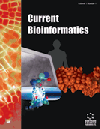
Full text loading...
We use cookies to track usage and preferences.I Understand
Artificial Intelligence is a field within computer science that endeavors to replicate the intricate structures and operational mechanisms inherent in the human brain. Machine learning is a subfield of artificial intelligence that focuses on developing models by analyzing training data. Deep learning is a distinct subfield within artificial intelligence, characterized by using models that depict geometric transformations across multiple layers. The deep learning has shown significant promise in various domains, including health and life sciences. In recent times, deep learning has demonstrated successful applications in drug discovery. In this self-review, we present recent methods developed with the aid of deep learning. The objective is to give a brief overview of the present cutting-edge advancements in drug discovery from our group. We have systematically discussed experimental evidence and proof of concept examples for the deep learning-based models developed, such as DeepBindBC, DeepPep, and DeepBindRG. These developments not only shed light on the existing challenges but also emphasize the achievements and prospects for future drug discovery and development progress.

Article metrics loading...

Full text loading...
References


Data & Media loading...

